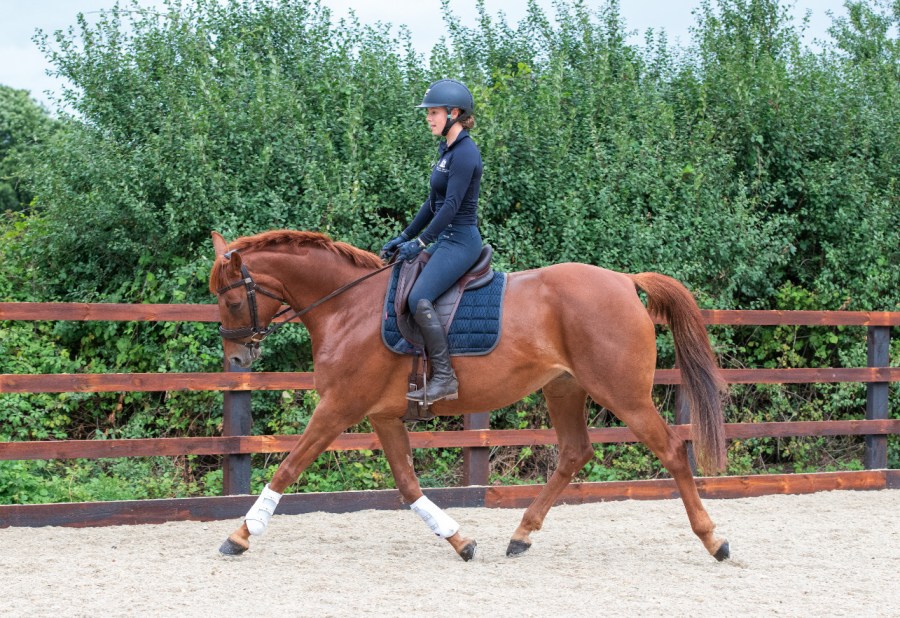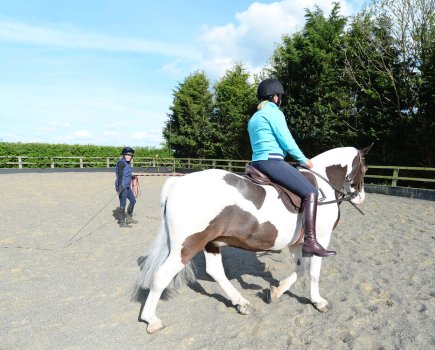A test of accuracy and of your horse’s suppleness and balance to both left and right, the movement of two half 10m circles to change the rein crops up in dressage tests all the way up from intro level.
It’s a great way for you, your trainer and a judge to see if your horse is staying soft in his back through several changes of bend. You will only achieve this softness when your horse is relaxed and supple.
“All dressage movements test your ability to ride accurately. You also need good preparation,” explains British Dressage list four judge and trainer Alex Gingell.
“You can’t expect your horse to stay in a good rhythm and balance if you don’t prepare him before the movement — and you can’t do this if you’re not totally clear about how to ride it.”
What the judge is looking for
This movement is mainly ridden in trot. Your horse should be round, connected and moving forwards freely with a soft back and his handlers stepping under and carrying sufficient weight for him to be in self-carriage.
Your horse should show a clear bend through his whole body one way, then straighten up momentarily over X and before bending smoothly through his body the other way.
He should also remain in the same rhythm throughout the whole movement and during the changes of bend.
How to ride it
To ride a half 10m circle left from E to X, followed by a half 10m circle right to B:
- Half-halt before starting the first half circle. Ask for inside (left) bend and ensure the connection is elastic before you come off the track.
- Leave the track at E and turn your hips and body in line with the curve of the circle — this will help your weight stay even in the saddle.
- As you turn, check the gap between your bottom rib and the top of your hip remains the same on both sides.
- Look up and towards X.
- When you arrive at X, ride straight for one stride and then change the bend to the right.
- As you change the bend, turn your head and upper body to the new direction. Keep your elbows close to your sides and take your hands around the turn together.
- As before, ride another fluent and accurate half circle to the marker to complete the movement.
- As you reach B, breathe and straighten your horse.
Common errors to avoid making
When riding this movement, avoid the following:
- Poor-shaped half circles
- A loss of balance
- Varying rhythm
- Hollowing/resisting
- Tightening over the back and shortening of the stride
- Loss of engagement
- Falling onto the forehand
- Hurrying
- Swinging the quarters
3 exercises to try at home
1. Maintaining fluency is the key to training for this movement. There must be no blocking through the frame when changing the rein and bend. Riding serpentines, with varying sizes of loops, is a good exercise to practise. The aim is to maintain an even looseness at all times, as you move effortlessly from one loop to the other.
2. Ride complete 10m circles from E and B. Once you can do this easily, you will know how much bend you need in order to ride a 10m circle accurately. Now, with the feel of that full circle in your head, ride one and a half 10m circles at E. Then ride straight up the centre line when you reach X for the second time — look straight to A or C and you’ll be able to judge your turn exactly.
3. The larger your horse is and the larger his natural paces are, the harder this movement becomes. To help you get it right in a test situation, practise riding tighter half circles (perhaps 8m diameter) at home. By doing this, it will make riding a half 10m circle easier at competition.
Meet the expert: Alex Gingell is a British Dressage list 4 judge and trainer. He and his wife Jayne founded and run Hack Up, an award-winning bespoke supplement company for horses.









